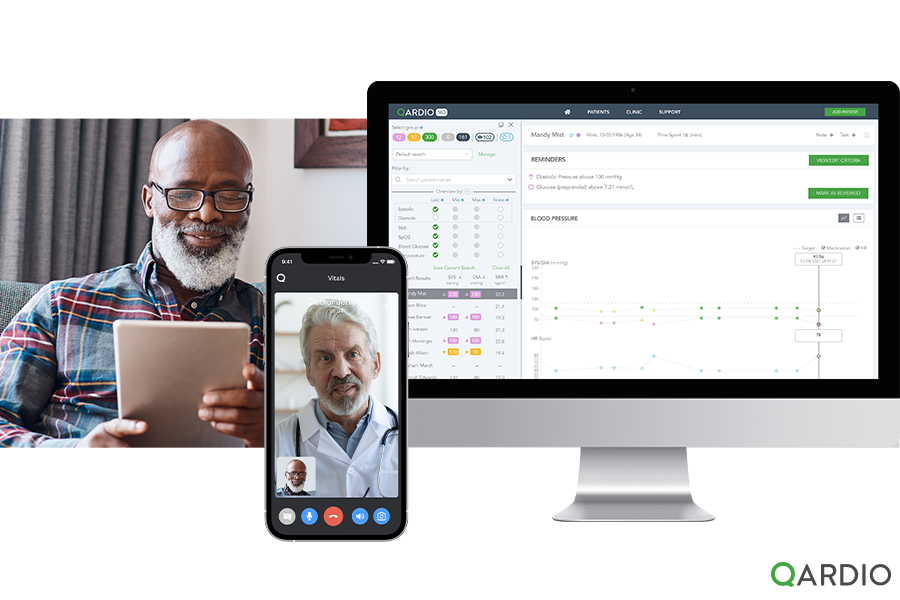As defined by the Centers of Disease and Prevention, telehealth is the “use of two-way telecommunications technologies to provide clinical health care through a variety of remote methods.” The use of telehealth services has been widely adopted across North America and worldwide since the COVID-19 pandemic. In fact, the CDC reported a 154% increase in telehealth visits in the US during the last week of March 2020 compared with the same period in 2019. We spoke with two doctors to understand how the use of telehealth and patient video consultations affected their practices during the COVID-19 pandemic.
Video consultations allow for better patient education and health management
Dr. Jerry Bailey, physician in acupuncture and chiropractic at Lakeside Holistic Health in Washington, has been using video consultations with patients for many years prior to the COVID-19 pandemic. In Dr. Bailey’s experience, “There are many benefits to using video consultations:
- Less overhead as doctors can cut rented space costs
- More efficient practice and better communication with patients
- Less risk of infecting the staff or other patients with a virus/bacteria of communicable illnesses
- The ability to work from anywhere and still see patients for a few hours each day improving patient care and outcomes
- Getting patients used to video based education can roll them into masterclasses, group visits and programs teaching them what they need to know and how to implement the care you prescribe, which increases revenue for the physician with less work.”
The use of video consultations helps Dr. Bailey to see his patients in a different environment: “I feel that video consultations increase patient engagement for those that embrace it. I believe getting our clients used to the virtual setting allows for better education for them and better management of their health. We can “see” into their home life and how this may be affecting their health. The environment in which they spend most of their time is a predictor of health and disease outcomes.”
Based on Dr. Bailey’s experience of video consultations, in certain situations, physical examinations are still necessary: “Although many things can be inspected via video and the patients can measure their own temperature, pulse oximetry, blood pressure, height and weight, without being able to physically examine a client it is harder to determine if a referral is needed for an abscess, growth, or potential tumor under the skin or abdominal wall. However, technology with wearables is greatly improving and one can measure so many more health-related markers.”
Video consultations improve patient convenience
Dr. Shyam Ravisankar, oncologist, prior to the COVID-19 pandemic, used to fly out to provide care for his patients in Grand Prairie, Alberta, Canada once a month in. As of March 2020, due to COVID-19, their practice started using video consultations for their patients as both physicians and patients wanted to minimize exposure to themselves.
Dr. Ravisankar shares how some of his patients were reluctant at first to start video consultations, however this was eased once he took the time to explain. “I educated my patients regarding the risks of COVID-19 transmission and the advantages and effectiveness of video consultations. Most of them were satisfied but I did have to see a few patients in person especially in February – March 2020. The situation is much better now in 2021 and some patients actually refuse a visit to the clinic even if I ask them to come. Overall, patient’s convenience has improved significantly.” The majority of his patients, in particular the elderly and sick, found video consultations very convenient as they could stay at home, saving money and time.
The future of health technology
Technology is evolving and changing rapidly, in particular health technology. In Dr. Bailey’s opinion, “medicine has done a great job of defining disease but not defining health. Technology is going to be rapidly moving towards defining and implementing health markers in the next 3-6 months and the years to come. The creation of all the wearable tech for monitoring sleep, workouts, temperature changes, and much more are changing the way we do health care.”
QardioMD – Now with patient video consultations
Video consultations are available to all users of the QardioMD remote patient monitoring healthcare service at no additional cost. QardioMD’s new telehealth solution offers the opportunity for healthcare providers to initiate video consultations with their patients to provide more regular care and help improve patient health outcomes. The video call functionality allows healthcare professionals to treat more patients, and provide more personalized care remotely.
To learn more about how patient video consultations with Qardio can add value to your practice, speak with a product expert here.
—
Dr. Jerry Bailey, is a Functional Medicine Physician, Certified Nutritionist, Acupuncturist, and Chiropractor at Lakeside Holistic Health. He empowers his patients to regain their health and optimize their resilience through the application of acupuncture, chiropractic, nutrition and mindset.
Dr. Shyam Ravisankar is an oncologist in New Jersey, affiliated with Newark Beth Israel Medical Center and Saint Barnabas Medical Center.
Sources
cdc.gov


